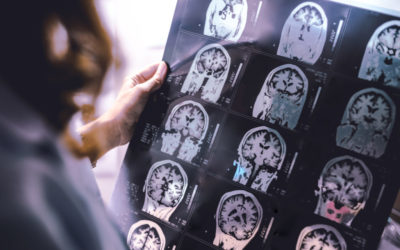Quick Hits
Daily brief research updates from the cognitive sciences

We’ve all heard of near-death experiences and reports of people moving a long a white tunnel or corridor while technically dead. These are often believed to be proof of life after death or of the soul moving on.
These reports capture the collective imagination and they are also very consistent and though not common, common enough to warrant investigation. Attempts have been made but this is inherently difficult to investigate – first of all we need to actually know when people are dying and it may be immoral to suddenly wire them up to brain scanners when they are, not to mention that the concern with all involved will be on keeping the person alive.
However, a team of researchers at the University of Michigan decided to look into this in more detail and first of all looked at animal data they could access. Some of these showed surges after activity in the brain shortly before death which could be a signature of these experiences.
They then managed to find the data of four patients who had passed away in the hospital due to cardiac arrest while under EEG monitoring. These four patients were comatose and unresponsive and considered beyond medical help and had their life support removed after consultation with their families.
And in two of these patients after the removal of ventilation support there was in increase in heart rate and a surge in gamma waves in the brain – precisely those waves associated with consciousness. What’s more those brain waves were found in an area at the back of the brain at the junction between different brain lobes, regions (specifically the temporo–parieto–occipital junction).
This area is associated with dreaming and hallucinations in epilepsy and altered states of consciousness. This could therefore be a view of that near-death experience and it is certainly fascinating that this happens in the dying brain. However, this is only in two patients out of four and as these patents subsequently passed away we have no idea whether this was a near-death experience and a flash of consciousness or not.
It is, also, almost identical with another case I reported on last year – this was also a small sample – a sample of one.
I will continue watching this space with interest.

Andy Habermacher
Andy is author of leading brains Review, Neuroleadership, and multiple other books. He has been intensively involved in writing and research into neuroleadership and is considered one of Europe’s leading experts. He is also a well-known public speaker, speaking on the brain and human behaviour.
Andy is also a masters athlete (middle distance running) and competes regularly at international competitions (and holds a few national records in his age category).
References
Gang Xu, Temenuzhka Mihaylova, Duan Li, Fangyun Tian, Peter M. Farrehi, Jack M. Parent, George A. Mashour, Michael M. Wang, Jimo Borjigin.
Surge of neurophysiological coupling and connectivity of gamma oscillations in the dying human brain.
Proceedings of the National Academy of Sciences, 2023; 120 (19)
DOI: 10.1073/pnas.2216268120
More Quick Hits
Brain Scans Can Predict Your Political Affiliation
Quick HitsDaily brief research updates from the cognitive sciences rain scanning of political partisans is not new and it has long been reported that brain scans can predict political affiliation. But those studies were scans of political partisans...
Children with Same-Sex Parents Are Socially Well-Adjusted
Quick HitDaily brief research updates from the cognitive sciences his is not the first study to report that children of same-sex parents are well adjusted, there are plenty, but it is one of the first to be representative and hence gives some...
Simple Exposure to New Things Makes Your Brain Ready to Learn
ouldn’t it be great if we could learn things with no effort? Well, actually we often do, and children learn vast quantities of information, and knowledge with little to no effort – think of how well we learn languages which become fiendishly...
So, Can Cranberries Improve Memory?
tend to be hesitant to report on studies of single foods doing amazing things (because many do), but this piece of research still caught my eye. So, what did this group of researchers from the University of East Anglia find? Well, they...
The Real Problem with Social Media: It Induces Dissociative States
Quick HitsDaily brief research updates from the cognitive sciences ocial media seems to hijack our brains – or at least according to popular narratives. Most of us have experienced this where you get stuck in an endless stream of content,...
Adventurous Play Boosts Mental Resilience in Kids
o, a simple cheap way to help your kids improve all life skills and strengthen mental wellbeing. Too good to be true? Well, this piece of research, just out, finds a fascinating correlation with mental health and kids. This correlation was...






